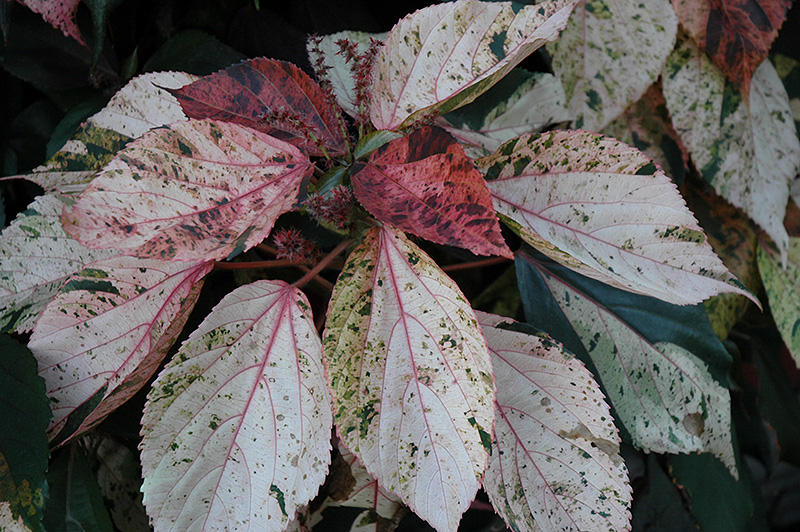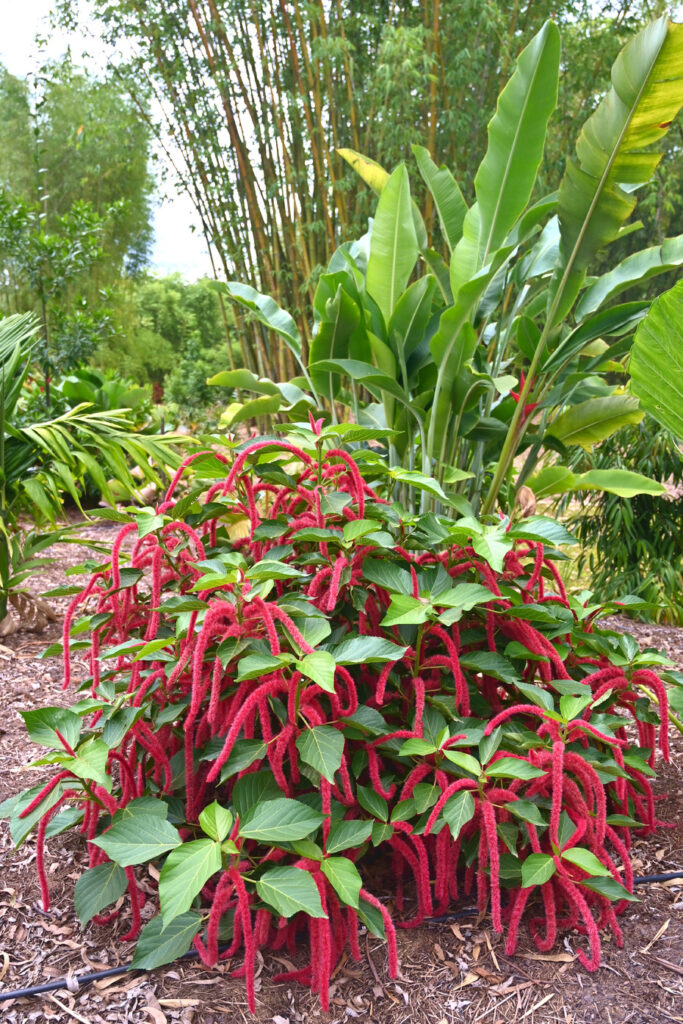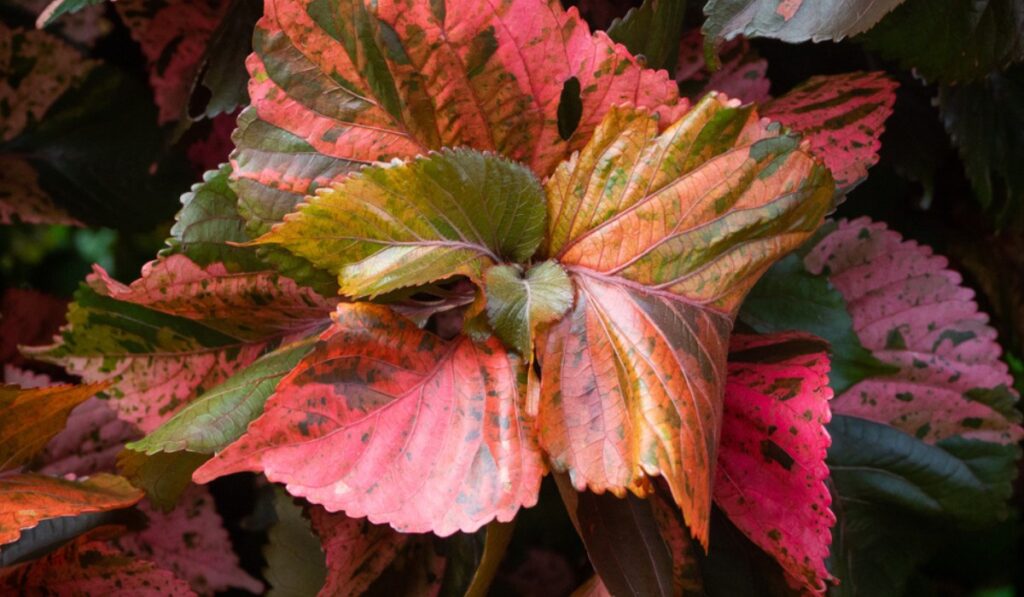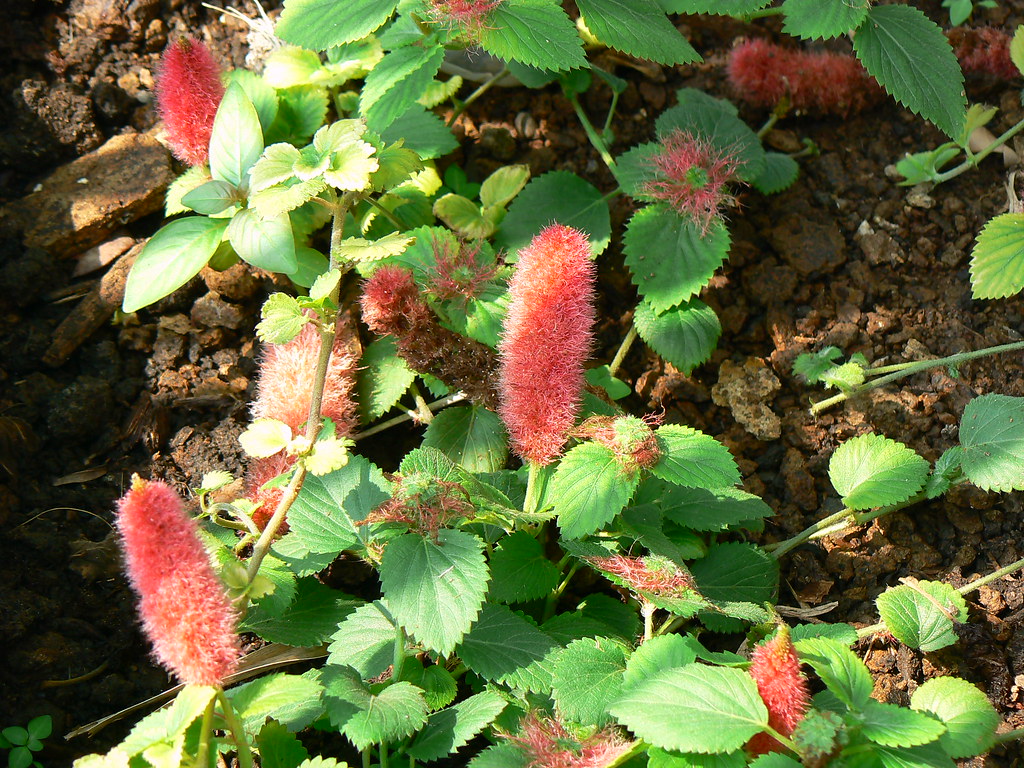Acalypha wilkesiana, commonly known as Jacob’s Coat, stands as a testament to the kaleidoscope of nature. This vibrant and dynamic plant has captured the hearts of garden enthusiasts worldwide, becoming a symbol of color and diversity in horticulture.
Contents
A Closer Look at Acalypha wilkesiana
Belonging to the Euphorbiaceae family, Acalypha wilkesiana boasts strikingly colorful leaves, making it a visual feast for any garden. The foliage exhibits a broad spectrum of hues, from deep reds to vivid greens and yellows, creating a mesmerizing display.
Originally hailing from the South Pacific, Acalypha wilkesiana has found its way into gardens across the globe. Its adaptability to various climates makes it a versatile choice for both tropical and subtropical regions.
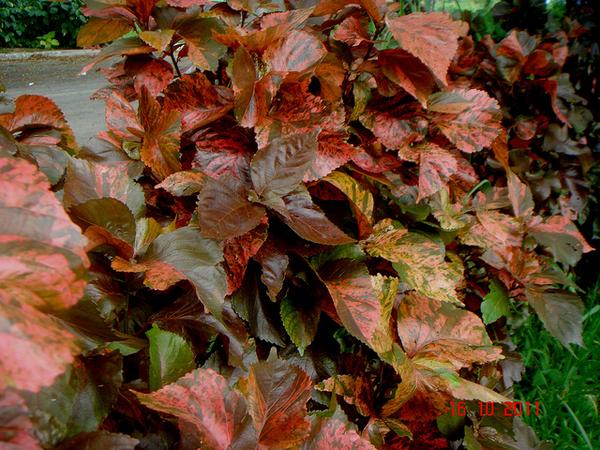
Landscaping with Jacob’s Coat: Adding Color to Your Garden
- Mixed Borders: Plant Jacob’s Coat alongside other flowering plants to create a vibrant and textured border.
- Focal Points: Use Acalypha wilkesiana as a focal point in your garden, accentuating its color amidst greenery.
Pair Jacob’s Coat with contrasting foliage plants like Coleus or ornamental grasses for a visually stimulating composition. Consider the color wheel to harmonize and balance your garden design.
Cultivation and Care Tips
Planting Acalypha wilkesiana is relatively simple. Choose well-draining soil, and provide ample space for the plant to spread its colorful foliage. Consider its mature size when planning its location in your garden.
This plant thrives in fertile, loamy soil with good drainage. While it appreciates full sun, partial shade is also tolerated. Regular watering, especially during dry spells, will help maintain its lush appearance.

Beyond Acalypha wilkesiana: Exploring Related Topics
Explore other plants that complement Jacob’s Coat, such as Croton or Caladium. Diversify your garden with a range of colorful foliage to ensure a stunning display throughout the seasons.
Introduce a mix of plants with different blooming periods and foliage colors to ensure your garden remains a visual delight throughout the year. Consider seasonal rotations and plantings for continuous vibrancy.
In conclusion, Acalypha wilkesiana, with its vivid hues and easy maintenance, is a perfect choice for gardeners looking to infuse their outdoor spaces with lively colors. Embrace the diversity of Jacob’s Coat and watch your garden come alive with nature’s palette.
FAQs About Acalypha wilkesiana (Jacob’s Coat)
- Can Acalypha wilkesiana be grown indoors?
- While it prefers outdoor conditions, it can be grown indoors if provided with bright, indirect light.
- How often should I fertilize my Jacob’s Coat plant?
- Fertilize during the growing season with a balanced, slow-release fertilizer every 4-6 weeks.
- Is Acalypha wilkesiana prone to pests?
- Keep an eye out for aphids and mites. Regular inspections and insecticidal soap can help manage these pests.
- When is the best time to prune Acalypha wilkesiana?
- Prune in late winter or early spring to shape the plant and remove any dead or leggy growth.
- Can I propagate Jacob’s Coat from cuttings?
- Yes, Acalypha wilkesiana is easily propagated from stem cuttings. Ensure the cuttings have a node, and use a rooting hormone for better success.
